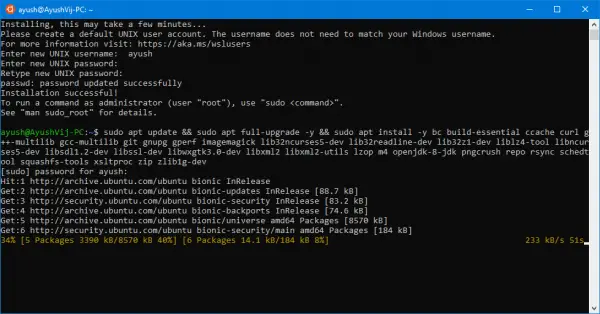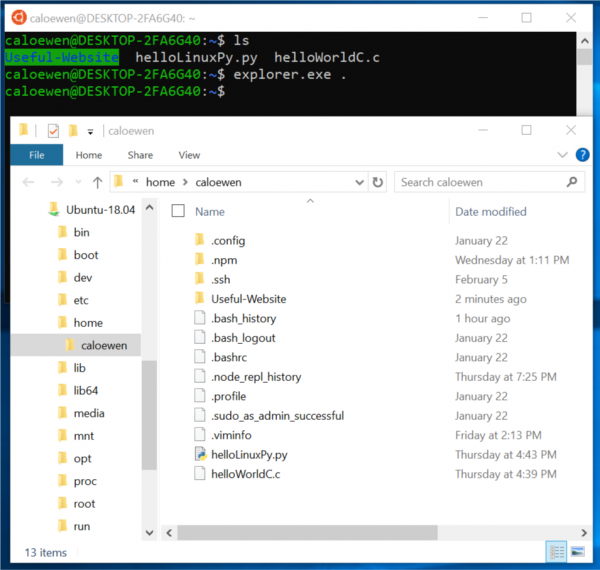Microsoft added the support for Windows Subsystem for Linux (WSL) on Windows 11 and Windows 10. It made it possible for users to install various Linux distros like Ubuntu, SUSE Linux, Kali Linux and more on Windows devices. Not only is WSL getting a real Kernel, but the ability to access Linux files on Windows 11/10 using File Explorer will also be present.

Access Windows Subsystem for Linux files on Windows
There are two methods to access Windows Subsystem for Linux files using File Explorer on Windows 11/10:
- Opening File Explorer from the WSL Terminal.
- Launching the root from File Explorer.
1] Using File Explorer inside WSL Terminal

- Open WSL Terminal.
- Navigate the root directory or top folder inside of the Terminal.
- Type in explorer.exe and hit Enter to open that location inside of the File Explorer.
2] Launching the root from File Explorer
This is a relatively straightforward method.
- Launch the File Explorer.
- Type in Linux and hit Enter in the address bar of the File Explorer.
- It will mount the storage for the Linux distros installed on your computer.
- The files are visible in File Explorer.
After you access these files within File Explorer, you can use programs installed on your computer to execute them normally. And any modification that you make will be visible inside the Terminal window.
WSL has proven to be a boon for all the developers who had to dual boot a Linux flavor to get their needs with the Terminal done.
Can you access Windows files from Linux subsystem?
Yes, you can access Windows files from the Linux subsystem and vice versa. Sharing and accessing Windows files from the Linux subsystem using the WSL terminal is possible. You need to open the File Explorer in the terminal. In other words, you can enter the explorer.exe command in the terminal window to get access to it.
Read: An error occurred mounting one of your file systems WSL error
Where are the Linux subsystem files on Windows 11?
To access the Linux subsystem files or Linux Bash files on Windows 11/10, you need to go to %userprofile%\AppData\Local\Packages. Alternatively, you can go to C:\Users\user-name\AppData\Local\Packages in the File Explorer. However, you must show hidden files to access the AppData folder in the C drive or system drive.
Troubleshoot: Windows Subsystem for Linux Error Messages and Codes.
Leave a Reply